Two small falcons – Merlin and American Kestrel
Peregrine falcons are probably the best-known of all falcons and we do see them occasionally in our valley. But we are much more likely to see one of the smaller falcons, Merlins and American Kestrels, especially in fall and winter. Let’s take a closer look.
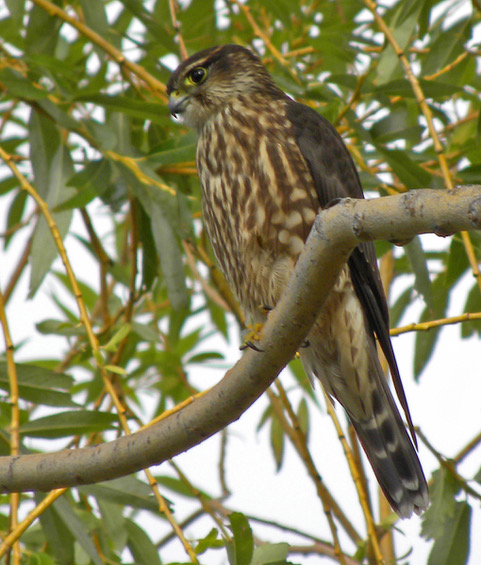
Like all falcons, both these species have pointed wings and are powerful, compact aerial hunters. Merlins vary in plumage from west to east, paler on the prairies but in our valley very dark. They are about 10”/~25 cm in length, females slightly larger than males. The back of the bird is a plain dark brown or very dark grey, while the front is finely and densely streaked. A faint ‘moustache’ and a short curved beak can be seen from the front.
They range from near the treeline of the far north across Canada to Newfoundland. Across the country most winter further south, the birds that come south from Alaska or the NWT heading for either the Pacific western states or Mexico. But many stay in our valley for the winter where they can find abundant prey. It is not uncommon to see them in urban Kelowna, where they hunt through parks and subdivisions using trees as cover and vantage points.
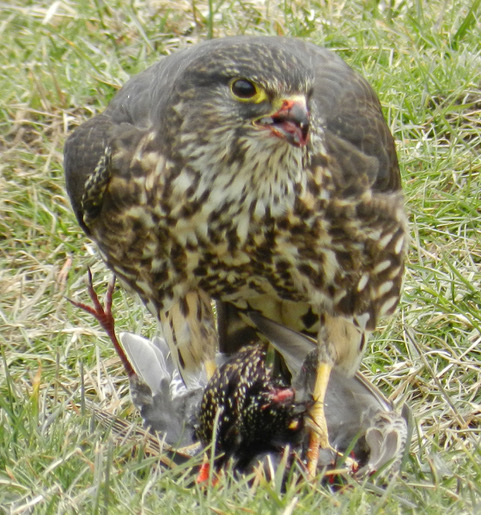
Formerly known as ‘pigeon hawks’, Merlins are fast-flying and can turn on a dime to use their long, thin toes, typical of falcons, to snatch small birds from the air. Prey as large as doves as well as large insects and even small mammals and bats are taken. Because Merlins fly very fast and are very aggressive, they are very successful hunters, and if you are lucky enough to see a hunt in progress, it’s exciting to watch. The photograph I took here of the Merlin with a starling was a case in point. From my car I watched it chase, capture, kill and then start to eat its prey, and was lucky to be able to get photographs as it ate on the ground.
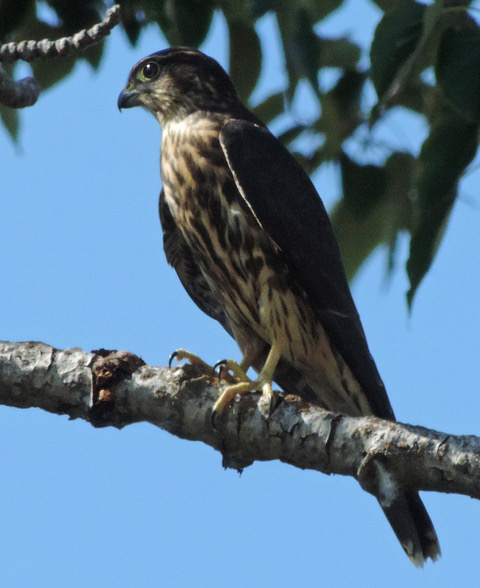
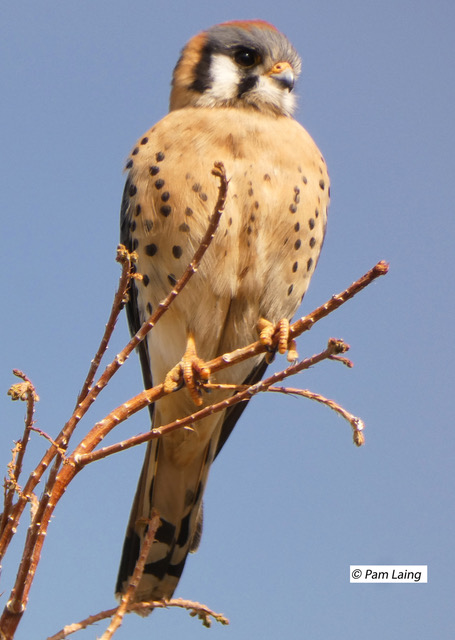
American Kestrels are more colourful and slightly smaller birds, at about 9”/~23 cm in length. They are the smallest of the North American falcons. Males have grey wings and crown, females a rich rusty brown, barred on the wings. As with Merlins the wings are short and pointed, enabling swift aerial manoeuvres with ease. They don’t have the long, thin toes of other falcons, possibly because they often dive into long grass to take insects and small mammals which would be more difficult if they did. The beak is similar to that of the Merlin but the facial ‘moustache’ is more pronounced.
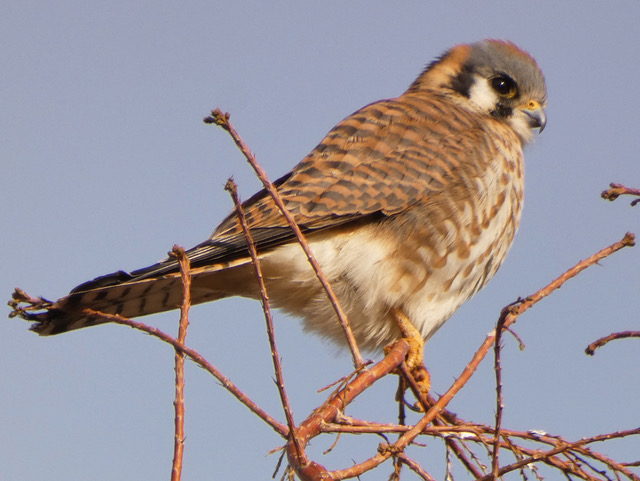
American Kestrels nest in natural cavities, holes in dead trees, woodpeckers’ abandoned holes, and also crevices in barns. They raise one brood a year. Their prey is grasshoppers and crickets in spring and summer and small birds and mammals in fall and winter. Lizards and snakes are also occasionally eaten. Kestrels are known to hover in order to spot prey beneath. It’s remarkable to watch a kestrel holding its steady position, sometimes for a long time, as it searches the ground below.
In our valley American Kestrels can be seen hunting over open areas such as our grasslands or parks. Quite often you will see them perched on overhead wires or power poles, as well as prominent trees, scanning intently below for something to eat. I have often seen them on Beaver Lake Road in Lake Country, where they are known to nest in spring, and at the Mission Park behind the Capital News Centre, where all of the photographs here were taken.
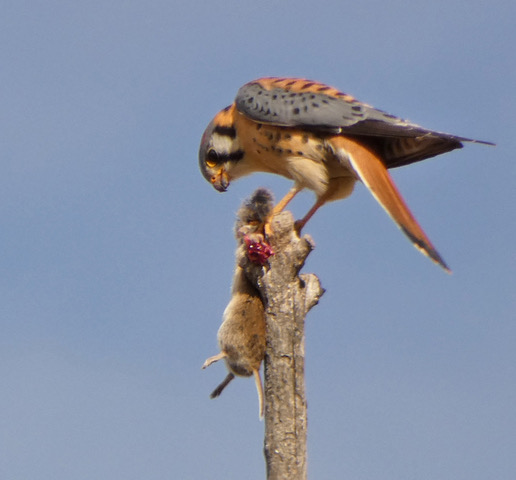
So enjoy our ‘local’ falcons this fall and throughout the year. Keep your eyes open as you drive or walk around our community, there are many of them to be seen.
Pam Laing
Okanagan birder







Lynn Calvert
Always love Pam’s beautiful photos with detailed identification of her subjects. We learn more each posting.